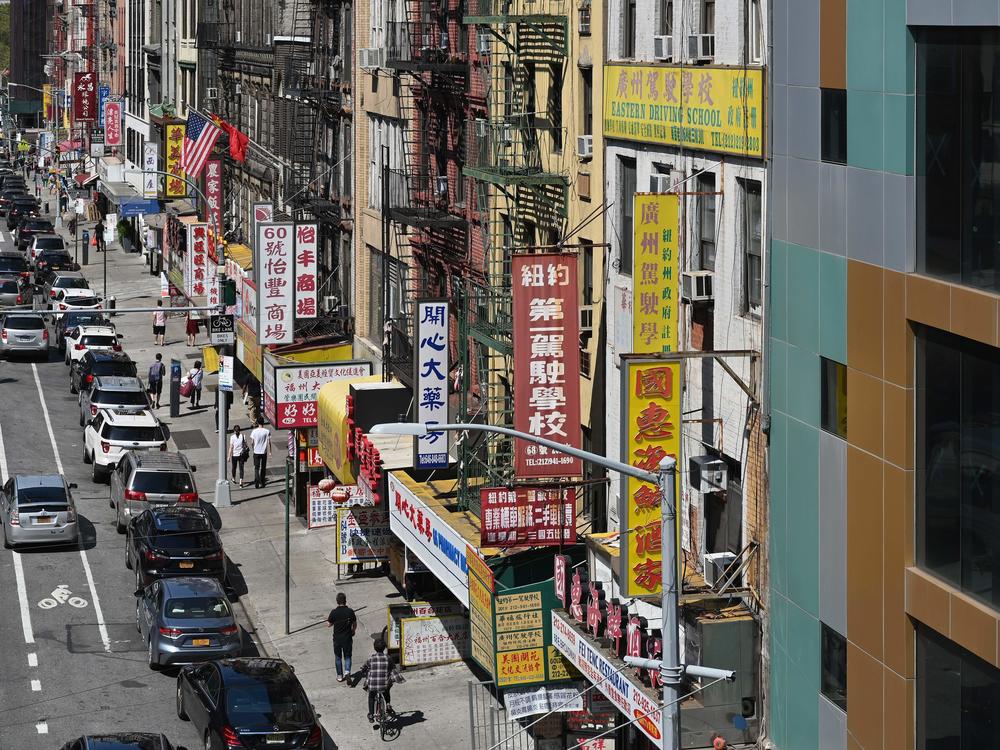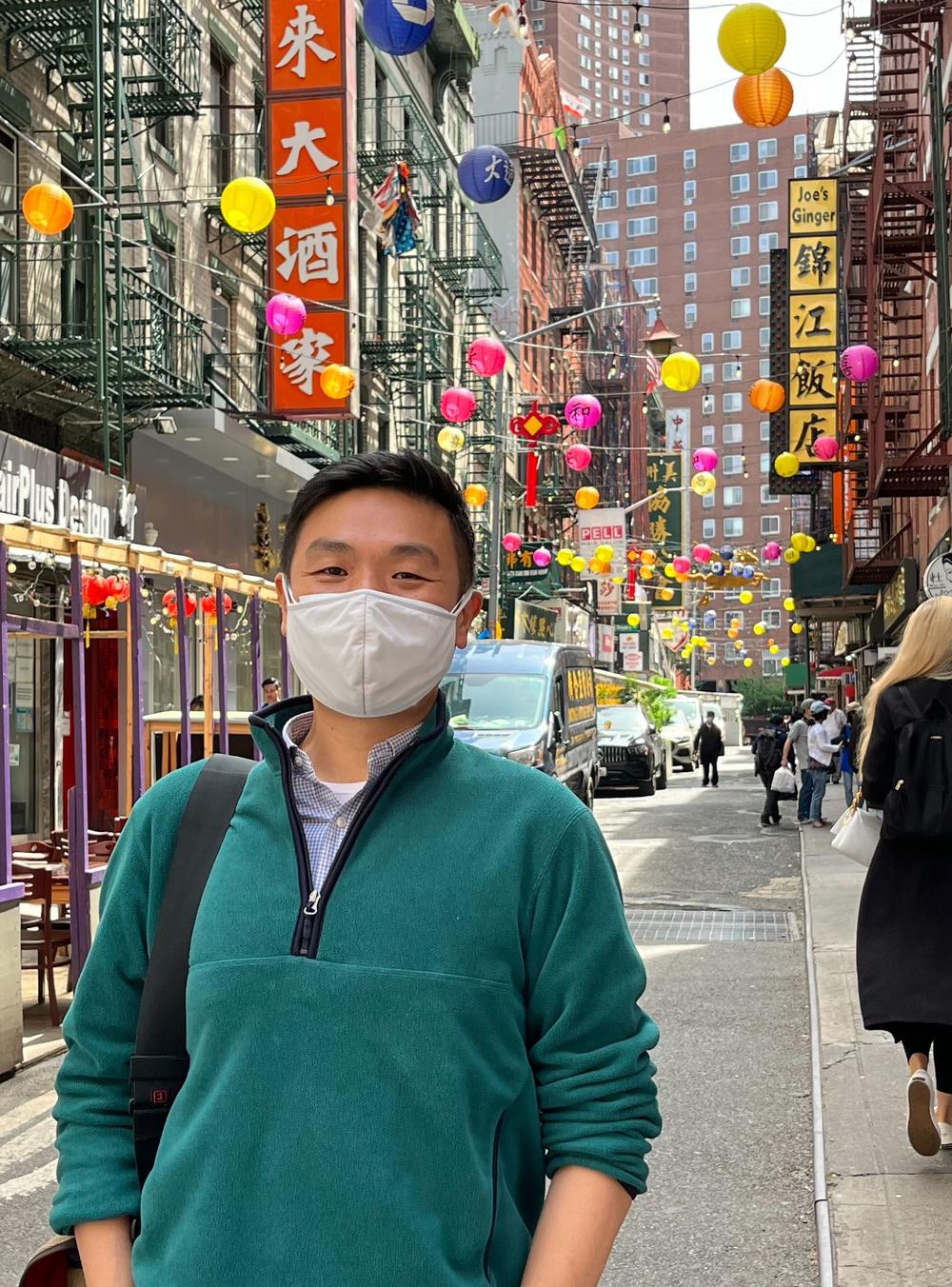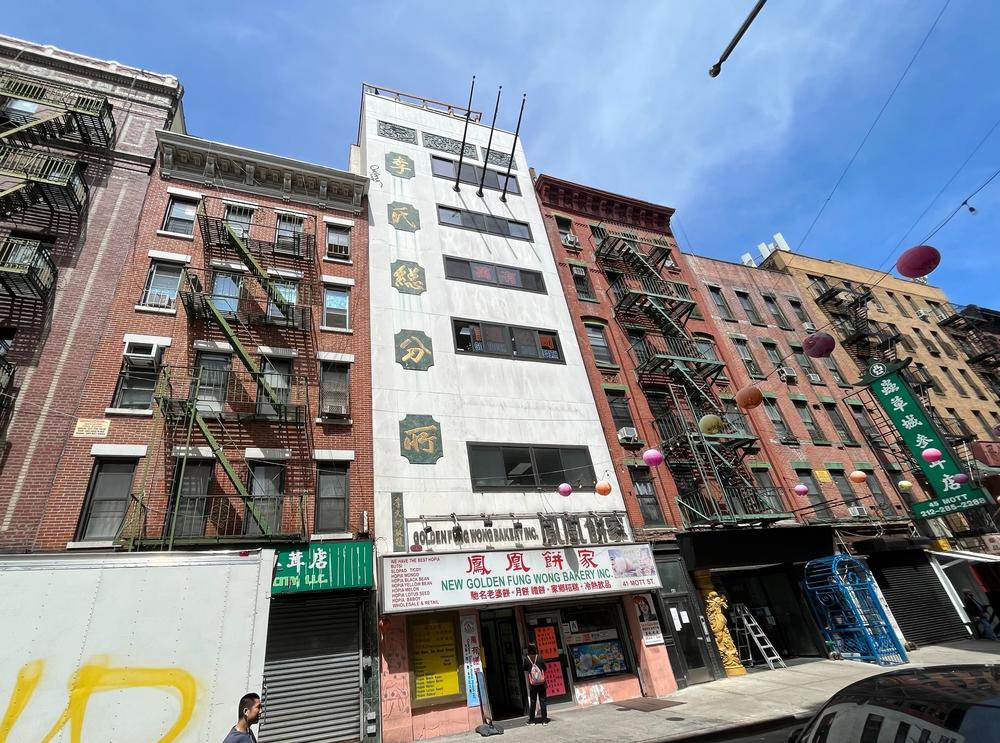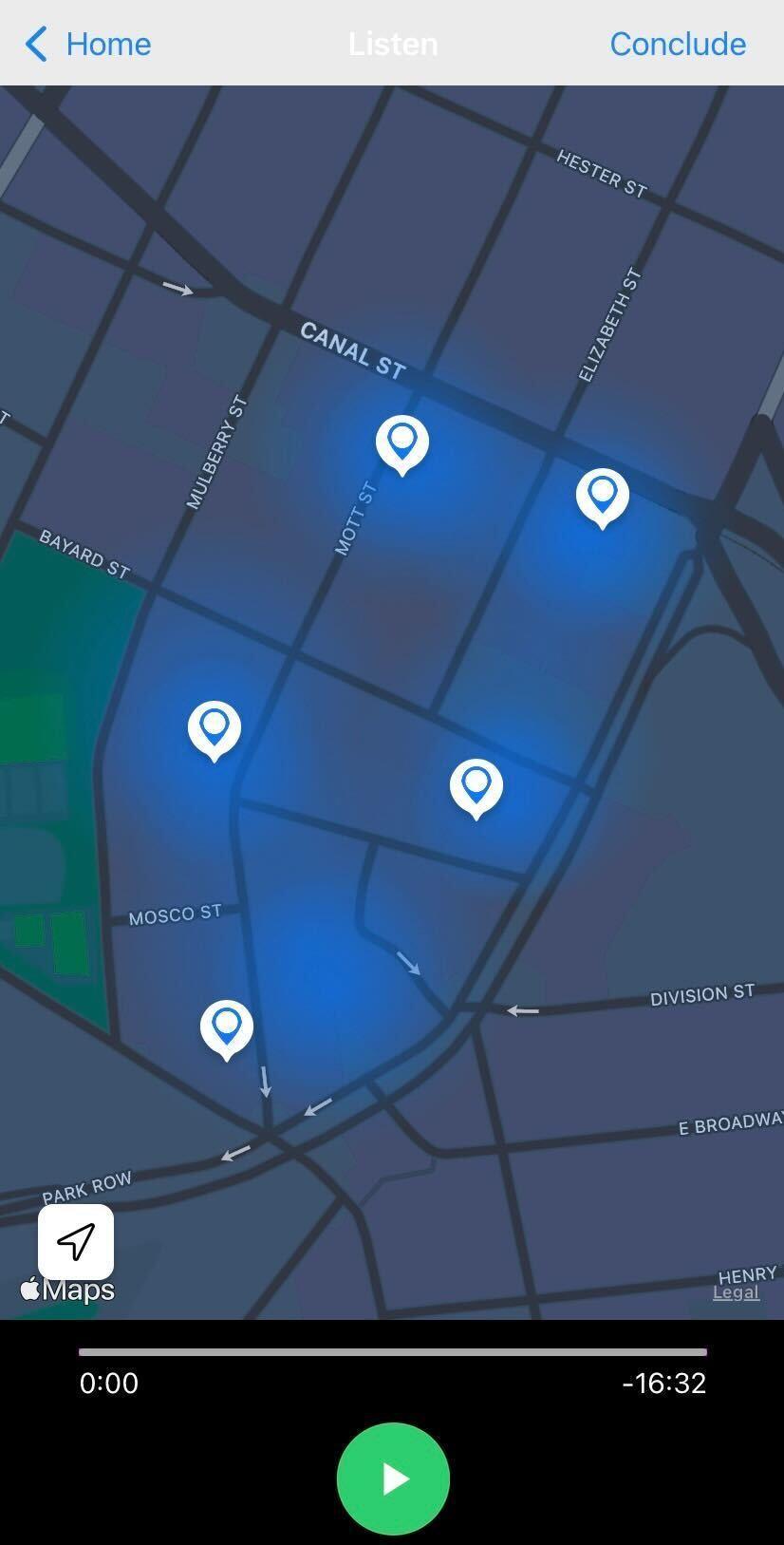Section Branding
Header Content
A new app guides visitors through NYC's Chinatown with hidden stories
Primary Content
Composer George Tsz-Kwan Lam has always liked writing music inspired by places.
"There are all these places in Chinatown that are both hidden and meaningful," he says, stepping out of the way of passersby while leading a tour of the neighborhood. "To uncover some of those hidden things in a city walk that you might not ordinarily notice — I wondered, is there a piece in that?"
It turns out there's not just a piece, but a whole app.
Lam interviewed five Chinese Americans from around the country, asking them about their experiences in Chinatown, plus questions about their ancestors, their families, their memories. He then set the answers to music, the instruments drawing attention to each person's distinct pattern of speech.
"I was thinking, if I embed these stories within music and also within a place, then you as a listener get to hear them in a different way — you start connecting with, oh well, I've walked by this building so many times, going to work, going to a restaurant, and now I can associate [those places] with this voice that's talking how about this person came here or who their grandfather was," Lam says.
He calls the piece — and the free app — Family Association, after the important civic groups that line the streets of the neighborhood. Chinese family associations have been a bridge between new immigrants and more established ones since the late 1800s. In Chinatowns across the country, they're a place to find resources or an apartment, talk business or politics, maybe get a COVID shot. But they're also a place to socialize with people who share similar experiences — most of the associations are built either around a single family name, like the Wong Family Benevolent Association, or places in China, like the Hoy Sun Ning Yung Benevolent Association.
Lam stops in front of a tall, white building, nestled among squat brown tenements. It's the Lee Family Association — its name is in green Chinese characters on the front — and like many family associations, it has street level retail, with the association on the floors above.
"You can see [the family association buildings] have different facades, with different elements that recall China, different architectural details, and then with Chinese characters naming them," Lam says. "I don't think it's something that you'd recognize in the midst of all the shops and restaurants vying for your attention as you walk down the street."
Five of the neighborhood's associations are anchors for the app. Visitors use the embedded map to see locations of the associations; because the app uses geolocation, as they walk closer to one of the family association buildings, much of the music and competing voices fall away, and the focus is on one of the five oral history participants, telling their story.
These stories aren't about the family associations; instead they're about the Chinese American experience and how they've felt supported by Chinatown, whether their particular Chinatown was in San Francisco, Boston, New York or elsewhere. But Lam says he thinks of the app itself as a kind of virtual family association, connecting these Chinese American voices with each other, even if they've never met.
And he hopes to connect with visitors, too — at the end of the soundwalk, users are given a chance to record their own memories.
"The idea is that later on I can incorporate some of these memories either into the piece or into another part of the piece," he says.
You can download the app onto an Apple device; users who are not in Manhattan's Chinatown can hear some of the oral histories by moving the map to lower Manhattan, and pressing on the blue and white flags.
Copyright 2022 NPR. To see more, visit https://www.npr.org.




